
 |
|
|
Amazing Spider-Man issue #129 has 22 pages and the first two pages contain barely 200 words of actual text. It also introduces a new vigilante “hero” named the Punisher who is trying to kill Spider-Man with an arsenal of weapons and a lax set of morals. According to most collectors this comic book is a classic, and to some—fans or not—this comic book and others very similar may be the next tool to improving the literacy of America’s youth. |
|
|||||||||||||||||||||||||||||||||||||||
Amazing Spider-Man #129, 1974 |
|||||||||||||||||||||||||||||||||||||||||
The 1999 National Assessment of Educational Progress, NAEP, long-term reading assessment found that the average reading scores for 9-year-olds increased during the 1970, but since 1980, there have been no further improvement in scores. The same was also true for 13-year-olds, but the increase in the scores of 17-year-olds during the same time period was statistically insignificant. According to the NAEP’s assessment, “the ability to read and understand complicated information is important to success in college and, increasingly in the workplace. An analysis of the NAEP long-term trend reading assessment reveals that only half of all White 17-year-olds, less than one-quarter of Latino 17-year-olds and less than one-fifth of African-American 17-year-olds can read at this level.” |
|||||||||||||||||||||||||||||||||||||||||
|
|||||||||||||||||||||||||||||||||||||||||
An Ohio first-grader settles in to read on the floor at
Deshler Elementary School in Columbus, Ohio. (AP Photo |
|||||||||||||||||||||||||||||||||||||||||
|
|||||||||||||||||||||||||||||||||||||||||
To some, hieroglyphics represent the first form of comics. According to many historians, though, the first recognizable incarnation of comics appeared in 1897. Richard Fenton Outcault's creation, The Yellow Kid, introduced the 20th Century to the term "yellow journalism" and the use of thought or speech ballons. Not until 1938 however, did comics come alive in the form most think of today. |
|||||||||||||||||||||||||||||||||||||||||
|
|||||||||||||||||||||||||||||||||||||||||
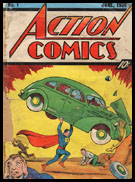 Action Comics #1, 1938 |
|||||||||||||||||||||||||||||||||||||||||
|
|||||||||||||||||||||||||||||||||||||||||
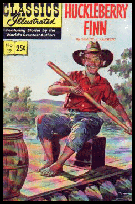 |
|
||||||||||||||||||||||||||||||||||||||||
Charles Hatfield, 39, assistant professor of English at California State University, said the merit question is still heard today. |
|||||||||||||||||||||||||||||||||||||||||
| Classics Illustrated's Huck Finn | |||||||||||||||||||||||||||||||||||||||||
“There will always be someone out there, some concerned parent in the school system who will say ‘well, that kind of reading is good for the reluctant reader, but it’s not good enough for my gifted son or daughter,’” said Hatfield. “I think some people are getting past that now, but you always have to reassure them.” |
|||||||||||||||||||||||||||||||||||||||||
In the 1950s, however, controversy arose over the legitimacy of comic books as literature for a new reason when child psychologist Frederick Wertham wrote Seduction of the Innocent, which alleged that comic books contributed to juvenile delinquency. The book led to Senate hearings, which in turn led to the creation of the Comics Code Authority, a set of rules for publishers to self-censor their comics, and the concept of comics possibly being educational was momentarily damaged. Steven Kirsh, 39, an associate professor of psychology, has studied the effects of comics on men and women at the State University of New York at Geneseo. He said extremely violent comics can produce some violent effects, but his studies have shown that it is the accumulation of violent stimuli that produces violent tendencies, not a single factor, such as a comic book. |
 |
||||||||||||||||||||||||||||||||||||||||
| John Chiangi and Lisa Drobnes add their comic book collection in the back of a pickup truck at Norwich, Conn., Feb. 26, 1955. The Women's Auxiliary of the American Legion has scheduled a burning of such books, inviting children to bring in 10 comic books in exchange for a "clean" book. (AP Photo Archive) | |||||||||||||||||||||||||||||||||||||||||
“It’s the totality of risk factors that causes aggressive behavior, not any one particular risk factor,” said Kirsh. “The simple way to think about it is that these risk factors in and of themselves aren’t enough to cause a person to act aggressively.” |
|||||||||||||||||||||||||||||||||||||||||
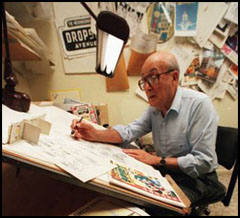 |
In the 1970s, Will Eisner, one of the most innovative comic book artists and creators of the 1930s, took another look at comics and their educational potential. He created American Visual Corporation, a producer of educational comics not for children, but for the military. His creation, PS: Preventive Maintenance Monthly, is still used today by the United States Army. In it, the comic book medium provides tips and suggestions for soldiers concerning unit maintenance and supply issues. The format was also adopted in Vietnam to make instructional booklets for soldiers who were believed to possess a lower educational level than those of previous generations. |
||||||||||||||||||||||||||||||||||||||||
| Comic strip artist Will Eisner works at his drawing board in Boca Raton, Fla., March 11, 1998, (AP Photo archive/Hans Deryk) | |||||||||||||||||||||||||||||||||||||||||
The comic taught children about the dangers of touching landmines that they might find while doing chores or simply playing outside. The comic was published in Cyrillic and Latin alphabets, the two scripts used for the Croatian, Serbian and Bosnian dialects, and was so effective that another was printed two years later. |
|||||||||||||||||||||||||||||||||||||||||
|
|||||||||||||||||||||||||||||||||||||||||
| Former First lady Hillary Rodham Clinton unveils a land mine awareness Superman comic book, Aug. 1999, in the Roosevelt Room of the White House. The book was distributed in Kosovo. (AP Photo archive/Khue Bui) | |||||||||||||||||||||||||||||||||||||||||
|
Wonder Woman joined Superman in Superman y la Mujer Maravilla: Al Asesino Escondido—Superman and Wonderwoman: The Hidden Killer. DC and the government printed 560,000 comics in Spanish and 90,000 in English for distribution in Nicaragua, Honduras and Costa Rica. It was a second effort to educate children about the dangers of anti-personnel mines and was part of the United States Demining 2010 Initiative, which aims to rid the world of mines by the end of this decade. |
||||||||||||||||||||||||||||||||||||||||
"Superman and Wonderwoman:The Hidden Killer" (AP Photo archive) |
|||||||||||||||||||||||||||||||||||||||||
 |
|||||||||||||||||||||||||||||||||||||||||
 |
|||||||||||||||||||||||||||||||||||||||||
|
|||||||||||||||||||||||||||||||||||||||||
| Art Spiegelman (AP Photo archive /Nadja Spiegelman/courtesy of Pantheon) |
Art Spielgelman's Maus |
||||||||||||||||||||||||||||||||||||||||
“It’s really rare for any proposed special award to actually be given,” said Gissler. “There has not been another special award in the letters category since 1992.” |
|||||||||||||||||||||||||||||||||||||||||
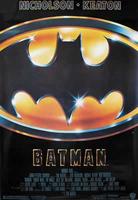 |
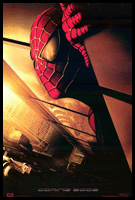 |
Today, many have seen beyond the business and entertainment aspects of comic books. Many view comic books as both art and literature. Some have re-evaluated comic books as an educational tool, even at the collegiate level. Randy Scott, 57, the director of the comic book collection at Michigan State University, said undergrads, graduate students and professors use the library's collection of more than 200,000 comics regularly. |
|||||||||||||||||||||||||||||||||||||||
Movie poster for Batman, 1989 |
Movie poster for Spider-Man, 2002 | ||||||||||||||||||||||||||||||||||||||||
He also said many college professors have been using comics and graphic novels as part of their syllabi for several years. Now, many are looking to bring comic books back to their target audience, younger students, not solely because they are a good lure to so-called reluctant readers but a way of exposing even the best readers to new words and concepts. |
|||||||||||||||||||||||||||||||||||||||||